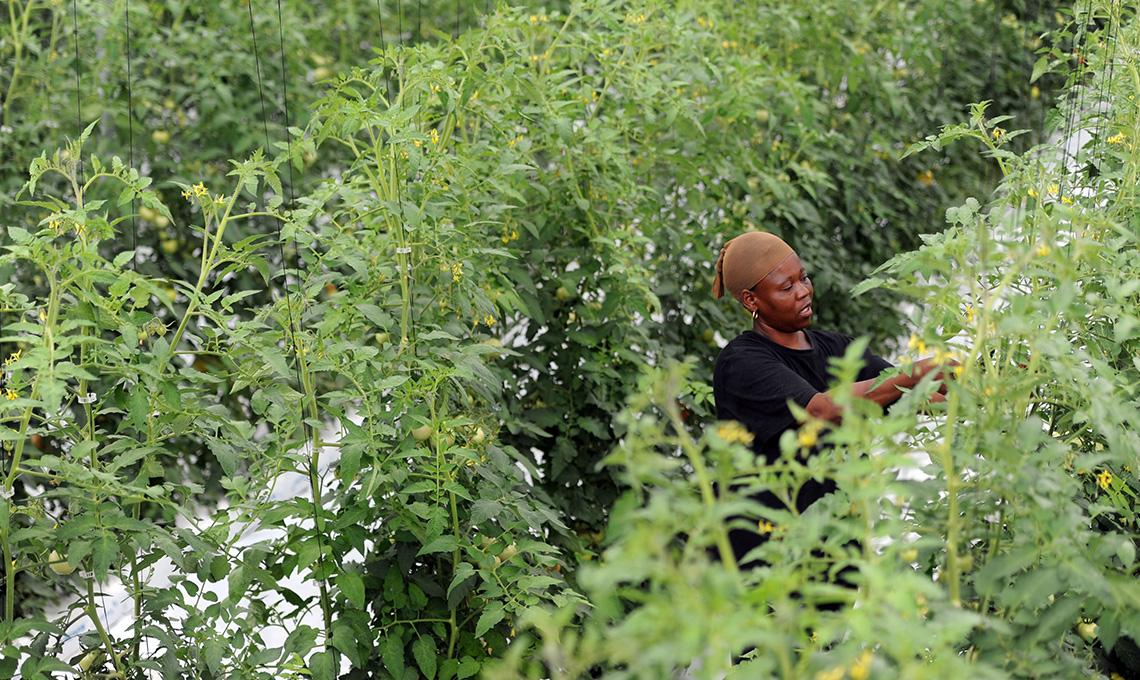SADC Regional Agricultural Policy
Agricultural development in SADC is an indisputable pre-requisite for poverty reduction as well as a key supplier of raw materials for the industrialization of the region. The SADC Regional Agricultural Policy (RAP) endorsed by SADC Council of Ministers in August 2014, provides an overarching policy framework for the Region’s agriculture sector. It defines common agreed objectives and measures to guide, promote and support actions at regional and national levels in the SADC agricultural sector towards the attainment of the SADC Common Agenda.
The RAP aims to:
- enhance sustainable agricultural production, productivity and competitiveness;
- improve regional and international trade and access to markets of agricultural products;
- improve private and public sector engagement and investment in the agricultural value-chains; and
- reduce social and economic vulnerability of the region’s population in the context of food and nutrition security and the changing economic and climatic environment
SADC Regional Agricultural Investment Plan
The RAP is being implemented in phases of five-year cycles by way of Regional Agricultural Investment Plans (RAIP). The RAIP (2017 – 2022) was approved by SADC Council of Ministers in April 2017. The estimated budgetary requirements to implement the RAIP over the five-year period is estimated at US$1.3 billion. The RAIP prioritized programmes for implementation during the five-year period and identifies the following five key programmes:
- Increased Agricultural Production, Productivity and Competitiveness whose key objectives are:
- to attain regional food self-sufficiency in basic strategic commodities, increase incomes, reduce hunger and poverty in the short term; and
- to assist Member States individually and collectively become major regional and global suppliers of selected strategic commodities
- Increased Access to Markets and Trade of Agriculture Products whose key objective is to develop a conducive environment for the trade and marketing of agricultural products by improving the efficiency of regional input/output markets and stimulating broad farmers’ participation in domestic, regional and international markets; improving the regional and international trade regulatory environment; and improving the development of agricultural marketing infrastructure;
- Increased Investments in and Access to Finance for Agriculture with the objective to support national efforts in promoting agri-business value chains, including agro-processing; and agricultural financing;
- Reduced Social and Economic Vulnerability in the Region which programme aims to reduce vulnerabilities in the agricultural sector brought about by climate change and variability; socio-economic factors such as gender inequality, HIV/AIDS and migration; and food insecurity in a changing economic environment. This programme will also address issues relating to disaster preparedness, response and recovery for food and nutrition security, water and energy; and
- Improved Food and Nutrition Security for the Region with the key objective to generate, analyse and disseminate a varied range of information including information on vulnerability, malnutrition and food security, markets and trade; agro-meteorology; pests and diseases; among others. In addition, the programme focuses on providing data and information for monitoring and evaluation.
SADC Agricultural Development Fund
To facilitate the accelerated and effective implementation of the RAIP, a financial mechanism, the Agricultural Development Fund (ADF), was approved by the SADC Council of Ministers in August 2017 as a Special Facility under the overall SADC Regional Development Fund. The ADF is intended to provide financial incentive support for the implementation of the national agricultural investment plans within the framework of the RAP and RAIP. The ADF comprises several facilities, namely:
- The Value Chain Facility whose objective is to support the effective and efficient value addition processes for selected agricultural commodities and products;
- The Agriculture Infrastructure Development Facility whose objective is to enhance access to agriculture infrastructure including water, energy, land, roads, storage and other relevant agriculture infrastructure in order to ensure effective and efficient production systems for improved productivity and heightened competitiveness;
- The Market and Trade Facility which focuses on the marketing of, and trading in, agricultural products by strengthening institutional and regulatory frameworks, and improving access to market and trade information;
- The Agriculture Information Management Facility which aims to promote agricultural development by providing policy makers, planners and economic players access to reliable and timely information that is necessary for policy development, emergency preparedness, planning, and decision making;
- The Food and Nutrition Security Facility which aims to support preparedness, response and recovery from food and nutrition security related disasters;
- The Environment and Natural Resources Facility which aims to improve the effective, efficient and sustainable utilisation of environmental and natural resources with the view to increasing resilience of the agricultural sector while also reducing or limiting Greenhouse Gas (GHG) emissions; and
- The Governance and Institutional Development Facility which aims to provide financial and technical support for the establishment of institutional, governance and management structures required to implement the RAIP at both the regional and national levels; and provides for the formulation of the rules, regulations or guidelines for measures under all the Facilities at regional and national levels.
Each facility consists of one or more windows that define the priority areas for investment under such facility. Each window consists of one or more measures that identify interventions, projects or activities to be undertaken under such window and for which the ADF will provide financial support.
The ADF facilities are incentive based for the purpose of lowering operational costs and leveraging both public and private sector investment into agriculture. The facilities will allow each Member State to selectively use a mix of facilities to achieve individual country programmes. Furthermore, the facilities will allow for effective coordination and harmonization of Regional Agricultural Investment Plan (RAIP) and National Agricultural Investment Plans (NAIPs). In addition, the facilities provide clear entry points for donor/development partner/inter-departmental or organisational inputs to support agricultural growth in the Region thereby also enforce the principles of partnership, inclusivity, participation, coalitions, and aid harmonization, among others. Lastly, the facilities provide for effective monitoring and evaluation. Currently, SADC is in the process of operationalizing the ADF.


